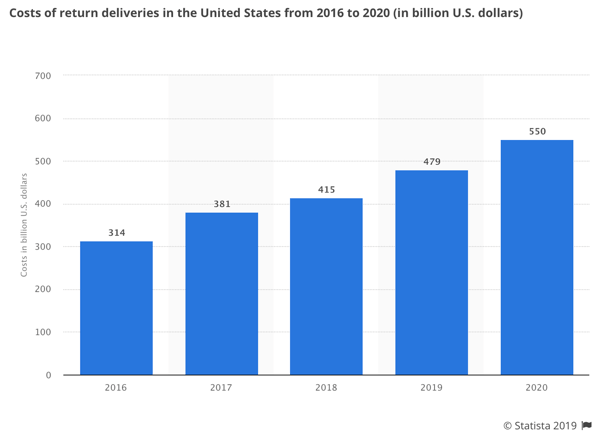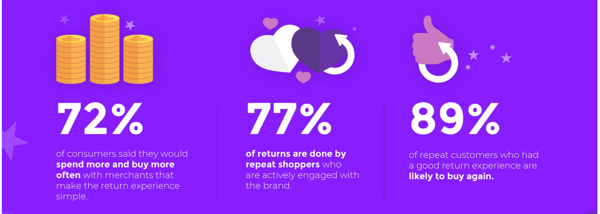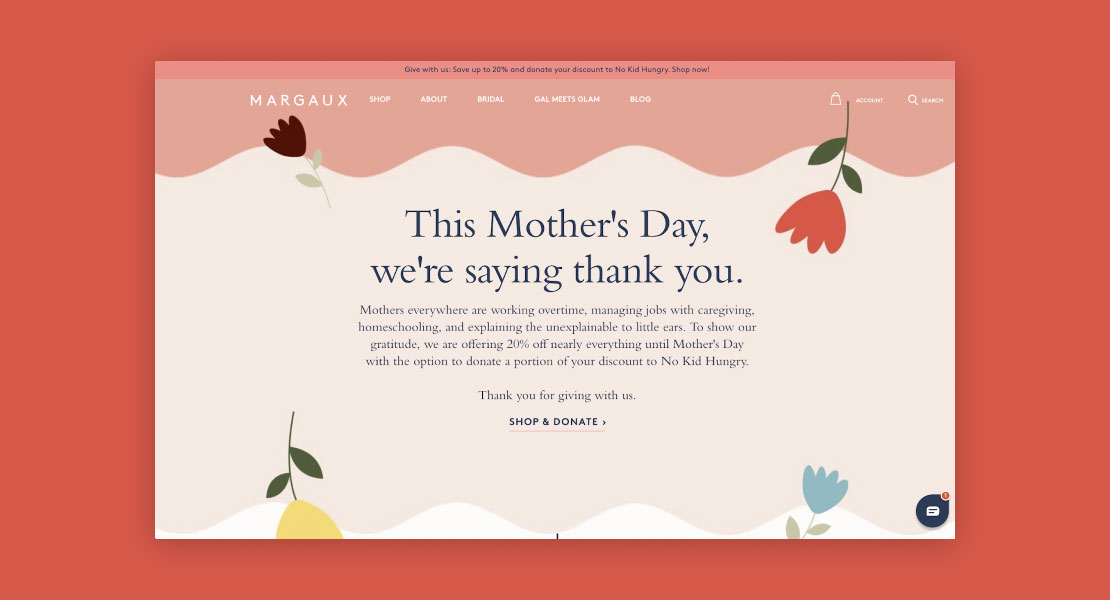In a rush to escape the red, many e-commerce businesses mistake their growing revenues for inevitable profitability. As evidenced by recent earnings reports, this isn’t always true. Even major retailers like Walmart, whose revenue increases with each quarter are finding difficulty reflecting the same growth in profit.
For your e-commerce company to truly succeed, you must find ways to safeguard your profit from the costs of doing business. In other words, you need to take an honest look at how you’re operating and be willing to make changes to how things are done.
Making changes to your operations may sound daunting. But much like eliminating that morning Starbucks run can improve your savings, making small, measured shifts to your business approach can yield significant changes to your bottom line. Ultimately, those shifts produce the positive margins necessary for your e-commerce business to scale the way you want it to.

The disconnect between revenues and profits
First, let’s put into perspective why achieving profitable margins are a challenge. A good case study is Walmart.
Earlier this year, a report from Recode noted that the retail giant’s US e-commerce segment is expected to lose over $1 billion this year. That’s after anticipated revenues of between $21 billion and $22 billion.
So what gives?
For a company like Walmart, a laundry list of expenses eats away at potential profits. Tariffs, transportation, and shipping costs (such as offering customers free one-day shipping), and their approach to accepting lower margins for a competitive advantage to name a few.
Of course, Walmart being Walmart, they find ways to make up that e-commerce shortfall in other areas of their business. However, that option isn’t always available for e-commerce brands that depend solely on product sales.
None of that is meant to scare you aware from your e-commerce dreams. It’s merely the reality of a highly competitive industry. But part of this reality is that you can still gain an advantage. For an e-commerce enterprise that is pushing the $5 million to $10 million mark in revenue, your most valuable asset is your flexibility.
Unlike Walmart or other big-name online brands, your operational structure is still evolving organically. You don’t have to move mountains to improve efficiency, implement new technology, streamline processes, or negotiate more attractive partnerships. The flexibility of your firm translates into plenty of opportunities to experiment with different strategies and improve your margins.
With that in mind, let’s explore four areas where you can cut costs, save money, and increase profits.
Learning from Amazon
What Walmart’s e-commerce struggles highlight — and in a broader sense, what all of e-commerce faces — is the very real Amazon Effect. Once reserved for how Amazon impacted brick-and-mortar stores, it’s now felt by providers operating in a strictly digital realm. Amazon can scale, discount, and negotiate at a level unmatched in US retail history. Unfortunately, this can distort customer expectations, making offerings like one-day shipping a standard that shoppers come to expect and other companies must match.
That said, between our increasingly mobile society and consumers wanting a genuine connection with their chosen brands, there remains space for smaller, diligent e-commerce companies to make their mark and generate profits. Two of the most successful approaches include automation and brand identity.
Invest in automation
One of the main reasons that Amazon has been so successful is its ability to scale and automate — everything. However, these capabilities are not exclusive to Amazon. In fact, with the increasing prevalence and affordability of artificial intelligence, you can automate:
- Marketing, advertising, and retargeting campaigns
- Customer service and communications
- Sales and inventory management
- Pricing strategies
- Capture and tracking of sales data
- Financial and accounting processes
Automation cuts the time and effort your team devotes to these tasks, allowing more time for them to grow your business instead of simply managing it. It also maximizes your reach without maxing out your expenses.
Take a closer look at the technologies you are using — are there ways to integrate them, so they automatically exchange data? Are you using software with comprehensive automation features so you can reduce the number of tools you need to use? You might save on costs by prioritizing automation in your tech stack.
Focus on your brand identity
The other aspect to overcoming the Amazon Effect is building a recognizable brand that consumers want to engage with. Your company identity, though, goes beyond an effective logo and consistent, well-presented brand style (although both are excellent starting points).
You want to establish a genuine identity, a brand story that features your core values, goals, and vision for the future. Something that not only represents who you are but also how you want to connect with consumers.
NLP Communication practitioner and certified Life, Social and Emotional Intelligence, and Motivational coach, Celinne Da Costa, notes:
“The most successful companies in the world have profound stories behind them (often deeply tied to their founders) that instill a sense of bigger purpose and meaning into what they do. For example, Apple, Tesla, and Google are so much more than companies – they are legacy brands created by visionaries who aspire(d) to change the world.”
She goes on to add:
“Perhaps a business doesn’t aspire to be the next Apple, but it is worth asking: should the business just be a product or service provider, or a vision that an audience believes in and subscribes to?”
Ultimately, e-commerce success is as much about who you are as it is about what you sell. There are many vehicles to help bring your brand identity to life that can be used cost-effectively, such as email marketing and social media. Create a brand identity that others want to engage with, and you’ll find them also engaging with their wallets.
Streamlining logistics
Logistics is a broad department of your e-commerce enterprise, but regardless of where you look, every aspect of fulfillment is costly. There are many ways to get your product to the consumer, and each cuts into your profit margins. Paying attention to your fulfillment operations can be a major key to uncovering more profit. Here’s how.
Shift your shipping burden
Review your shipping partners and determine if your current activity should reward you with more favorable shipping rates. If not, use your volume as leverage and shop your account around. If you’re very high volume, an exclusive provider contract could make financial sense versus an ad hoc approach. Just be aware of policy changes and retain the means to terminate the contract if circumstances don’t work out.
Don’t rule out USPS or regional carriers, as both can prove cheaper and be just as reliable as other services. If you do decide to employ several carriers as your solution, invest in automation software for fulfillment to ensure you are always shipping with the cheapest rates.
Bury your dead (or dying) stock
Another huge financial burden is the stock you carry, and more specifically, the stock that’s not moving. Long sitting inventory is losing value, and the longer it sits, the more holding costs it generates.
Get rid of the dead weight by offering specials or discounts on unpopular, hard to sell, or out of season products. If you require an aggressive liquidation, offer deep discounts — 25% to 50%, or more.
The immediate financial hit might be painful, but few ways are better at quickly reducing inventory costs. Plus, if you take the right approach with your promotion, you can generate value in other ways. For example, ask that customers donate to a social cause to access a significant discount, and you might recoup those losses in better brand reputation and new fans.
Get smart with your packaging
Don’t underestimate the sneaky costs of packaging, which gets at the heart of small things making a huge difference. Take stock of what you ship your products in and how you package them. Yes, you want purchases to be safe, but many shippers today ship using the least amount of materials possible.
Aim to use lighter, smaller packing, with enough protective wrapping to meet your shipping provider’s requirements. Purchase your shipping materials in bulk at a discount if you have the storage space (another reason to get rid of your dead stock). And of course, recycle what you can or look at eco-based packing materials. Up front, they cost a bit more, but their lighter weight and consumer appeal carry long-term financial benefits.
Battling buyers remorse
Logistics going out is one thing, but arguably the most cumbersome way your business loses profits is the problem of logistics coming back in — aka returns. A necessary evil in every retail segment (consumers today demand the process be easy and free), returns can be especially burdensome within the tight margins of e-commerce.

Aside from a full or partial refund, you face shipping and packaging costs, labor handling and storage upon its return, and the prospect you’ll be unable to resell the product at full price, if at all. Depending on the reason for the return, you may or may not have also lost a customer.
How do you fix this without further impacting your bottom line?
Build better product pages
Based on a survey from returns automation provider Return Magic, 65% of all returns are the result of incorrect size, style, or the item wasn’t as advertised. Regardless of what you sell online, vague and incomplete product pages are a precursor to returns.
Stop returns in their tracks by creating highly descriptive product pages, including several photos from multiple angles. Have an item in more than one color? Show off every hue in a selectable color palette.
Include videos that demonstrate the product rather than only showing static presentations. Make sure any size guides are accurate for the type of items you’re promoting (don’t use French sizing guides for a mostly American audience).
Return policy too strict? Try loosening up a bit
According to the University of Texas-Dallas, return policies identified as lenient resulted in more returns. Not surprising, right? What is surprising is the data also showed it resulted in more sales. This correlates with numbers that confirm friendly return policies foster loyalty to a brand, and 89% of consumers will make a repeat purchase if the return process is made easy.

In addition, the UTD study revealed that allowing longer time limits on returns resulted in fewer items sent back. They attributed this to the “endowment effect,” where the longer an individual has possession of an item, the greater ownership they feel over it.
Crunch data to find your keepers
Knowing where your returns are coming from is essential to limiting their numbers. Research your sales data to determine if a particular ad source is generating most of your returns. If so, it might be time to recalibrate your marketing approach.
Also, mine your numbers for why returns are happening in the first place. If you’re a clothier and the predominant reason is fit, consider upgrading your online sizing charts. If it’s not what a buyer expected, again, touch up your product pages. If the item didn’t fit the customer’s taste, avoid sending them future promotions for similar styles.
Never settle for the fact that somebody just didn’t like something or that a return equates to lost business. Promote policies that keep your customers happy while keeping more of your products permanently in their hands and profits firmly in yours.
Renegotiating your terms
Your relationship with suppliers is a critical piece in your e-commerce success. Understandably, you’d want to avoid rocking the boat in good partnerships. But don’t undervalue your business.
Seek favorable rates by targeting the supplier sweet spots of timely payments and large purchase requests. Prepayments can net you considerable discounts, and submitting larger orders will trigger deeper price breaks. Look to request additional perks too, like the waiving of freight fees or any surcharges on delivery.
Of equal importance is the ancillary costs of doing business.
Reach out to your credit card processor and test the waters for better fees. Yes, the major card fees are typically non-negotiable, but the fees through your processor, like setup, interchange, markup, transaction processing, or annual or reporting charges might have some wiggle room. There could even be breaks for going paperless or using automation (which you’re planning on anyway). If they don’t budge, find someone who will.
Additionally, look at your web platforms, third-party software providers, and ad partners. No sales or account manager wants to lose a big client; you could be missing out on big-time incentives by not engaging your provider network.
It’s easy to lose track of the more modest benefits of your company’s growth when in the process of growing. Make it a point to review your partnerships and providers regularly and take advantage of the economies of scale available to you.
Small steps, big profits
More growth, more revenue, more profit. Right?
As we noted earlier, that scenario is not always the case, even for the biggest and most successful companies. To pull meaningful profits from the tight margins of e-commerce, you must commit to regular evaluation of your operations.
Craft an identity.
Review your workflows.
Analyze your data.
Evaluate your relationships.
The broader point is to determine what works, what doesn’t, and where a small tweak or two in your operations can significantly increase your profits.


